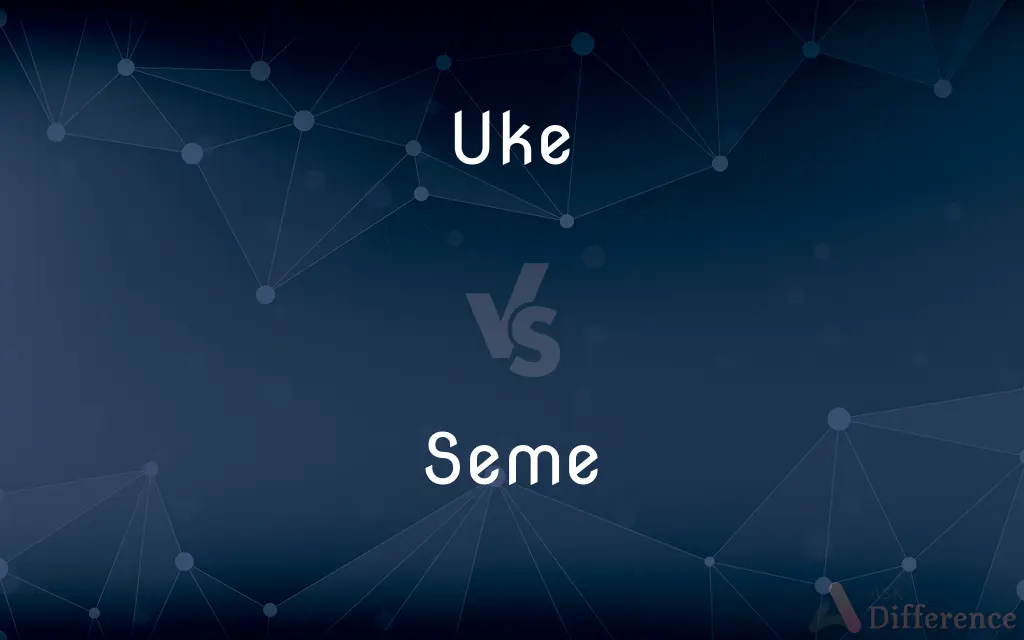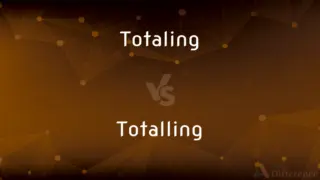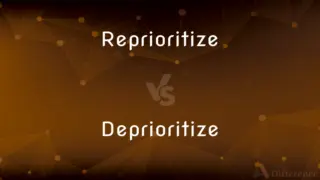Uke vs. Seme — What's the Difference?
By Maham Liaqat & Urooj Arif — Updated on April 26, 2024
Uke refers to the passive partner in a yaoi (male-male) manga relationship, often portrayed as more receptive and emotional, while Seme denotes the dominant partner, typically more aggressive and protective.

Difference Between Uke and Seme
Table of Contents
ADVERTISEMENT
Key Differences
In terms of physical appearance, Ukes are often drawn with softer, more youthful features which emphasize their role as the more submissive partner. This is in stark contrast to Semes, who are characterized by more masculine, rugged features that signify strength and dominance. These visual cues help readers instantly recognize the dynamics between the characters.
Narratively, Ukes are typically more emotionally expressive and are often shown dealing with internal conflicts and vulnerabilities. This emotional portrayal is balanced by the Semes, who are often the protectors or the more emotionally stable figures in the relationship. This dynamic not only drives the plot but also deepens the character development.
The role of Uke involves a greater focus on receiving affection and sometimes enduring hardships, which often leads to a character arc centered around growth and self-discovery. Meanwhile, the Seme's role often revolves around being a catalyst for such changes, pushing the story forward through decisive actions and emotional support.
In fan reception and cultural impact, Ukes are often celebrated for their complexity and relatability, which can challenge traditional norms of masculinity. Semes, on the other hand, often embody more traditional masculine ideals and are admired for their leadership and assertiveness, making them equally popular but for different reasons.
Comparison Chart
Role in Yaoi
Passive partner, emotionally open and vulnerable
Dominant partner, protective and decisive
ADVERTISEMENT
Physical Features
Softer, youthful appearance, smaller stature
Rugged, masculine appearance, often taller
Emotional Expression
Highly expressive, deals with internal conflicts
Less outwardly emotional, more stable
Narrative Function
Focus on personal growth, often the emotional center
Catalyst for action, drives the relationship dynamic
Cultural Impact
Challenges traditional masculinity, relatable
Embodies traditional masculinity, leadership admired
Compare with Definitions
Uke
Often portrayed with softer features and smaller stature in manga.
The artist drew the Uke with big eyes and a slight build, highlighting his youthful innocence.
Seme
A character in yaoi who is the dominant, more aggressive partner.
The Seme takes the lead in their relationship, setting boundaries and expectations.
Uke
A character in yaoi who is the more passive partner.
In the series, the Uke struggles with his feelings, revealing a deep emotional complexity.
Seme
Acts as a protector and a catalyst for change in the Uke's life.
The Seme encourages the Uke to face his fears and grow stronger.
Uke
Typically involved in a process of self-discovery and growth.
The Uke learns to assert himself more over the course of the manga.
Seme
Embodies traditional ideals of masculinity and leadership.
The Seme often resolves conflicts, demonstrating his role as a leader in their community.
Uke
Emotionally open and vulnerable, providing emotional depth to the story.
The Uke's heartfelt confession added significant emotional weight to the narrative.
Seme
Typically less emotionally expressive, providing a stable foundation in the relationship.
Despite the chaos around them, the Seme remained composed, offering reassurance.
Uke
Frequently the target of affection in a romantic narrative.
The Uke receives flowers from his partner, symbolizing their growing affection.
Seme
Characterized by rugged, masculine features and a taller stature.
The Seme's imposing figure was accentuated by his sharp jawline and broad shoulders.
Uke
A ukulele.
Seme
Having a design embellished with small delicate figures, such as a lacing of stars or flowers.
Uke
(informal) ukulele
Seme
Anything which serves for any purpose as a substitute for an object of which it is, in some sense, a representation, sign, or symbol.
Uke
A small guitar having four strings
Seme
A linguistic sign.
Seme
A basic component of meaning of a morpheme, especially one which cannot be decomposed into more basic components; a primitive concept.
Seme
Sprinkled or sown; - said of field, or a charge, when strewed or covered with small charges.
Common Curiosities
How do Uke and Seme roles affect the dynamics of a yaoi relationship?
These roles define the balance of power and affection in the relationship, with Uke typically being more submissive and Seme more controlling.
Are Uke and Seme stereotypes rigid in yaoi narratives?
Although Uke and Seme are stereotypical roles, many stories explore more fluid dynamics where characters may exhibit traits of both roles.
How do fans of yaoi perceive the roles of Uke and Seme?
Fans often have strong preferences for one role over the other, viewing each as fulfilling different emotional or aesthetic needs in the narrative.
What themes are often explored through the roles of Uke and Seme?
Themes of power dynamics, consent, and personal growth are commonly explored through these roles.
Can the roles of Uke and Seme be found in other genres besides yaoi?
These roles are specific to yaoi and related genres like yuri and bara, but similar dynamics can occasionally be found in other types of media, albeit under different terms.
Do Uke and Seme roles have any basis in traditional Japanese culture?
While influenced by Japanese cultural attitudes towards gender and power, Uke and Seme roles are largely modern creations for entertainment, especially within the yaoi genre.
Is there a psychological aspect to the preference for being Uke or Seme among fans?
Some believe that preferences for Uke or Seme roles may reflect personal attitudes towards power, intimacy, and identity, though this varies widely among individuals.
How have the roles of Uke and Seme evolved in contemporary yaoi?
Contemporary yaoi sometimes blurs or subverts traditional roles, offering more complex and varied character dynamics than earlier works.
How do Uke and Seme contribute to the development of secondary characters in yaoi manga?
Secondary characters often serve to challenge or reinforce the dynamics between the Uke and Seme, adding depth and tension to the primary relationship.
What impact do the portrayals of Uke and Seme have on societal views of masculinity and femininity?
These portrayals can challenge traditional views by presenting alternative masculinities and emotional expressions, though they sometimes reinforce stereotypes.
How do creators of yaoi manga design characters to fit the Uke and Seme roles?
Creators often use visual and personality cues to align characters with traditional Uke or Seme characteristics, such as physical stature and demeanor.
What are common misconceptions about Uke and Seme roles?
A common misconception is that Uke and Seme roles are strictly tied to physical dominance or submission, ignoring the emotional and narrative complexities involved.
Share Your Discovery

Previous Comparison
Totaling vs. Totalling
Next Comparison
Reprioritize vs. DeprioritizeAuthor Spotlight
Written by
Maham LiaqatCo-written by
Urooj ArifUrooj is a skilled content writer at Ask Difference, known for her exceptional ability to simplify complex topics into engaging and informative content. With a passion for research and a flair for clear, concise writing, she consistently delivers articles that resonate with our diverse audience.
















































